The Seated Queen
A constellation in the northern sky, named after the vain queen Cassiopeia in Greek mythology, who boasted about her unrivaled beauty. Cassiopeia was one of the 48 constellations listed by the 2nd-century Greek astronomer Ptolemy, and it remains one of the 88 modern constellations today. It is easily recognizable due to its distinctive ‘W’ shape, formed by five bright stars.
Cassiopeia is located in the northern sky and from latitudes above 34°N it is visible year-round. In the (sub)tropics it can be seen at its clearest from September to early November, and at low southern, tropical, latitudes of less than 25°S it can be seen, seasonally, low in the North.

The Stars

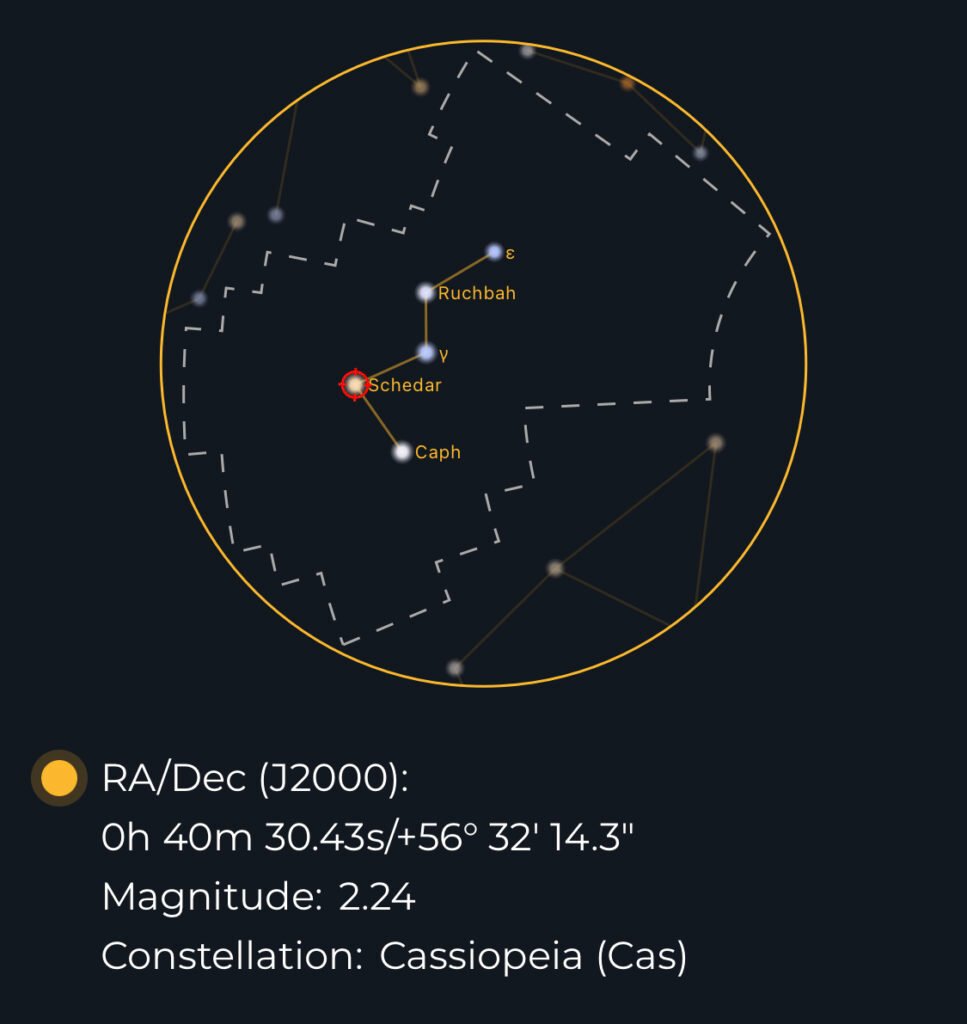
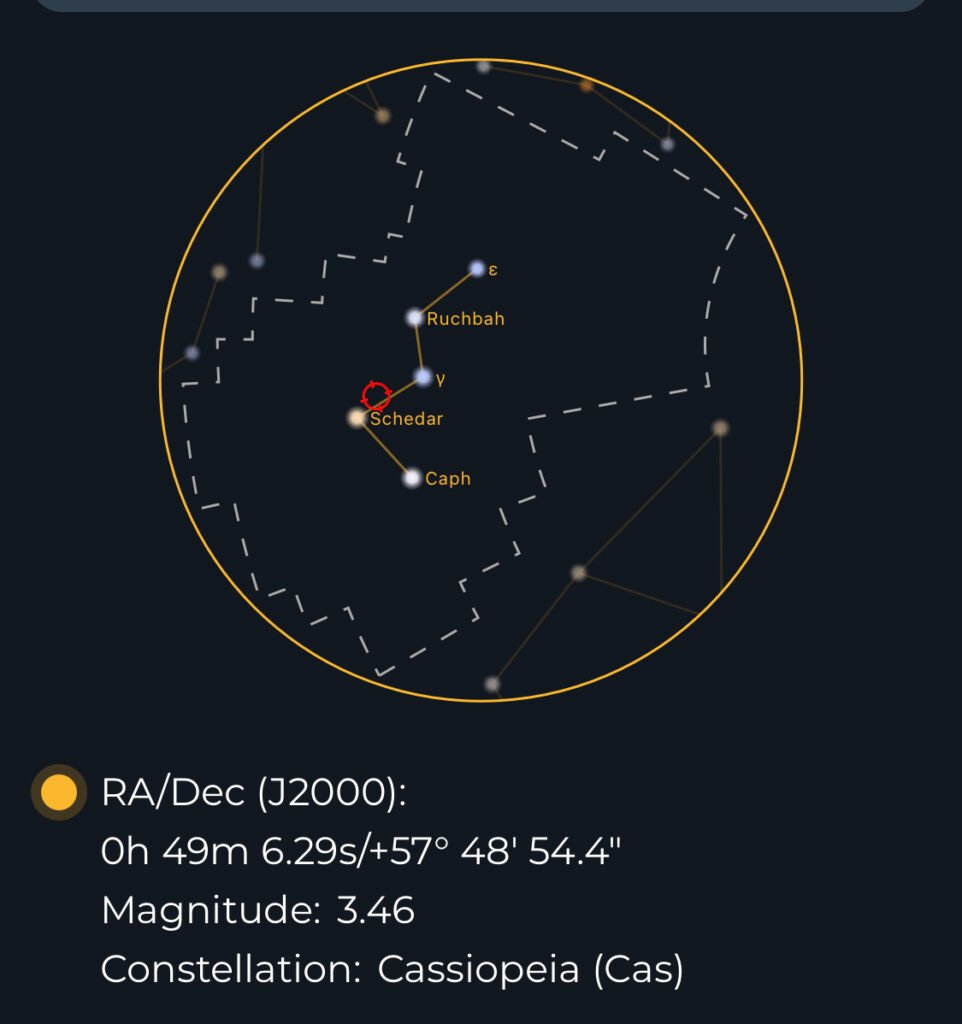
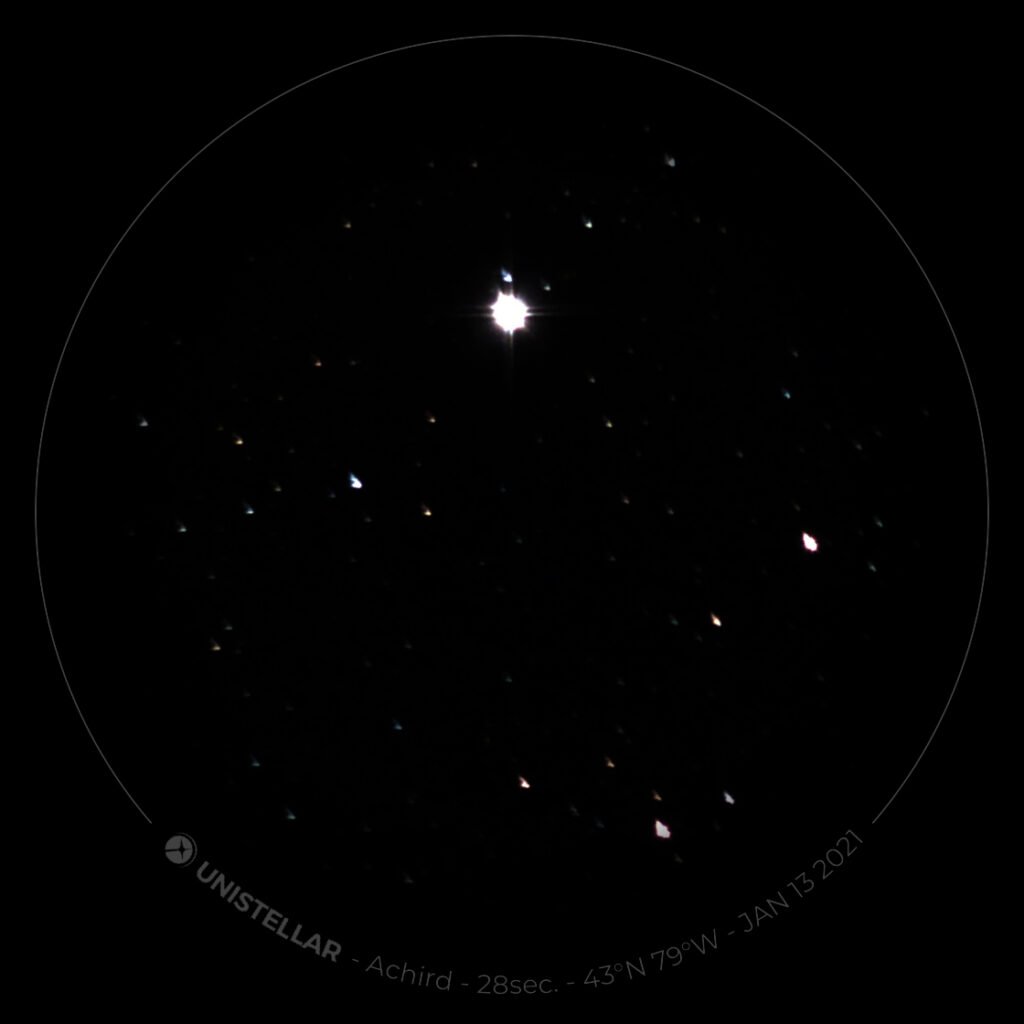
Nebulosity in Cassiopeia
Sharpless 2-199 (Westerhout 5, LBN 667, Soul Nebula) is a large emission nebula in the constellation Cassiopeia approximately 7,500 lightyears distance. This large star forming nebular region is commonly called the Soul Nebula. Some observers see the shape of a baby and refer to it as the Baby or Embryo Nebula. The nebula contains numerous named objects distributed throughout its structure.
Here is my processed picture of Sharples 2-199 (Hill Region)

Focal Length: 530mm Focal Ratio: f/5.0 Pixel Size: 5.4μm Image Scale: 2.1”
Mount: Paramount MyT Location: New Mexico
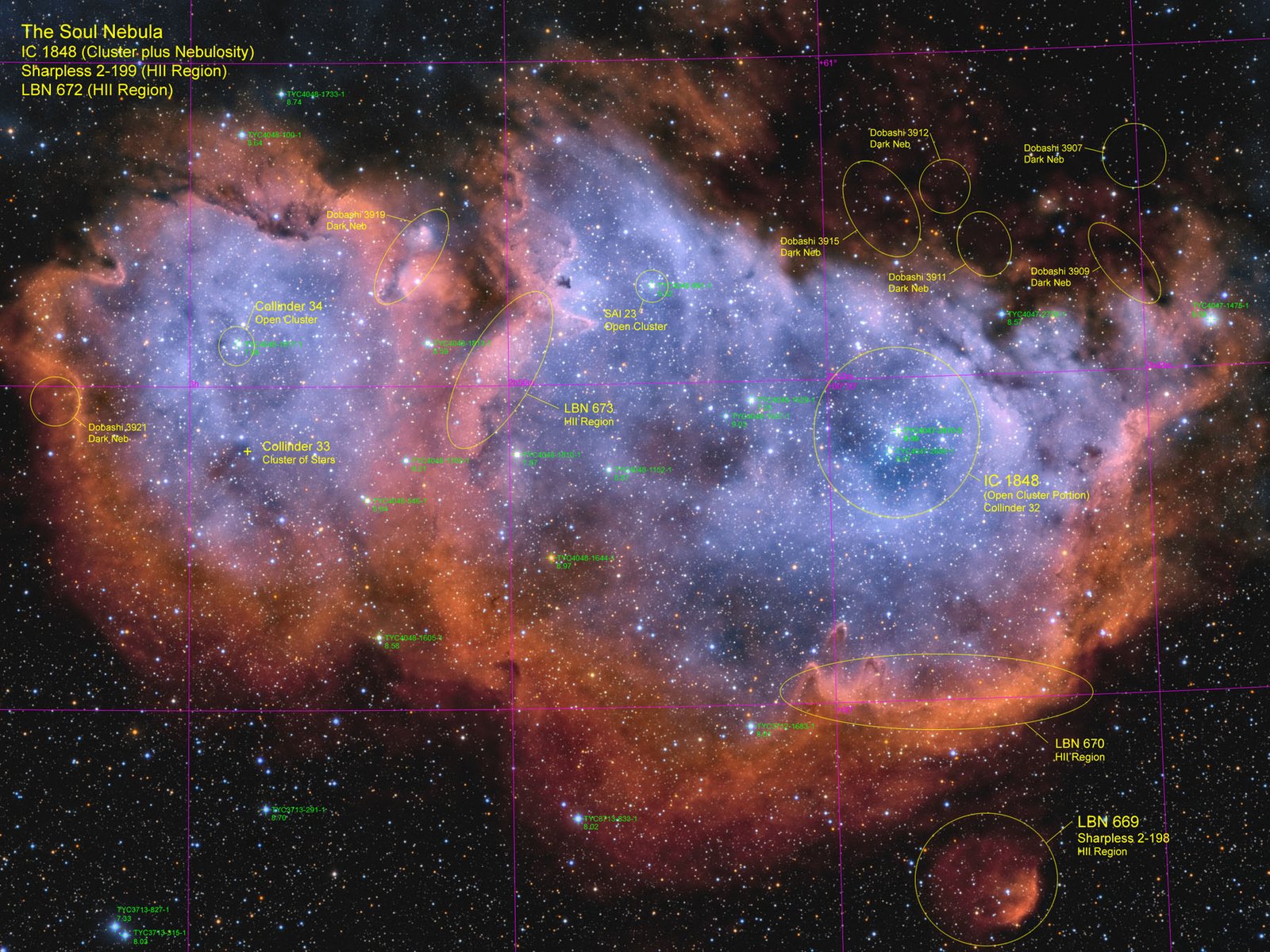
One such object is the open cluster IC 1848. It is comprised of the bright stars located in the body of the nebula. This cluster’s designation is often assigned to the entire nebula. The nebula is a very young celestial object with new stars currently forming in the complex clouds and pillars being compressed by the stellar winds and radiation emitted by the large hot central stars. W5 (Westerhout-5) radio telescope studies have determined the stars on the peripheral clouds surrounding the large blue areas are younger than the central star clusters. This supports the findings of gas and dust being pushed outward and compressed triggering new stellar birth.
Clusters in Cassiopeia

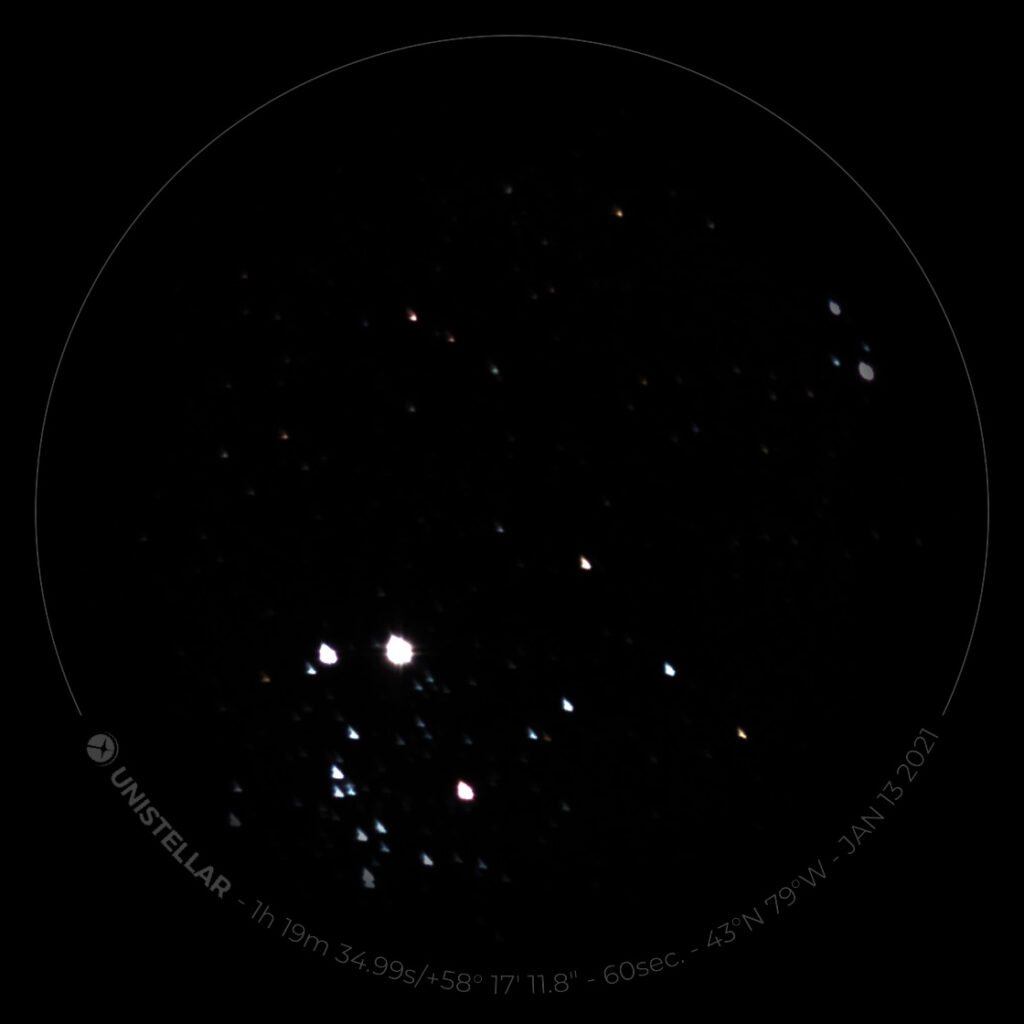

NGC 457 – Owl Cluster – Open Cluster
NGC 457 is the brightest open cluster in Cassiopeia and one of the finest objects of its type in the northern sky. At magnitude +6.4, it’s just beyond naked-eye visibility but easily seen with binoculars and a beautiful sight through telescopes. The brightest cluster stars are arranged in prominent lines and curves that resemble an Owl shape, hence the popular name “The Owl Cluster”.
NGC 457 was discovered by William Herschel in 1787. Finding the Owl Cluster is easy as it’s located two degrees south-southeast of eclipsing binary star system Ruchbah (δ Cas – mag. +2.7). This star is one component of the characteristic “W” asterism of Cassiopeia. The brightest star inside NGC 457 is Phi Cassiopeiae (φ Cas – mag. +5.0). Despite not being a member of the cluster, this foreground star is visible to the naked eye. Together with another non-cluster star, seventh magnitude HD 7902 (HIP 6229), they form the bright eyes of the Owl.
NGC 457 is best seen from Northern Hemisphere latitudes during August, September, and October. It appears high in the sky and even overhead from many locations. From latitudes greater than 32N, the Owl is circumpolar and therefore never sets.